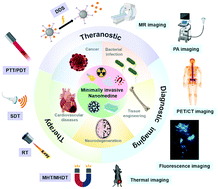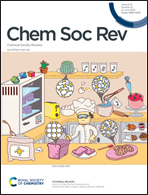Minimally invasive nanomedicine: nanotechnology in photo-/ultrasound-/radiation-/magnetism-mediated therapy and imaging
Abstract
Traditional treatments such as chemotherapy and surgery usually cause severe side effects and excruciating pain. The emergence of nanomedicines and minimally invasive therapies (MITs) has brought hope to patients with malignant diseases. Especially, minimally invasive nanomedicines (MINs), which combine the advantages of nanomedicines and MITs, can effectively target pathological cells/tissues/organs to improve the bioavailability of drugs, minimize side effects and achieve painless treatment with a small incision or no incision, thereby acquiring good therapeutic effects. In this review, we provide a comprehensive review of the research status and challenges of MINs, which generally refers to the medical applications of nanotechnology in photo-/ultrasound-/radiation-/magnetism-mediated therapy and imaging. Additionally, we also discuss their combined application in various fields including cancers, cardiovascular diseases, tissue engineering, neuro-functional diseases, and infectious diseases. The prospects, and potential bench-to-bedside translation of MINs are also presented in this review. We expect that this review can inspire the broad interest for a wide range of readers working in the fields of interdisciplinary subjects including (but not limited to) chemistry, nanomedicine, bioengineering, nanotechnology, materials science, pharmacology, and biomedicine.

- This article is part of the themed collection: 2022 Emerging Investigators


 Please wait while we load your content...
Please wait while we load your content...